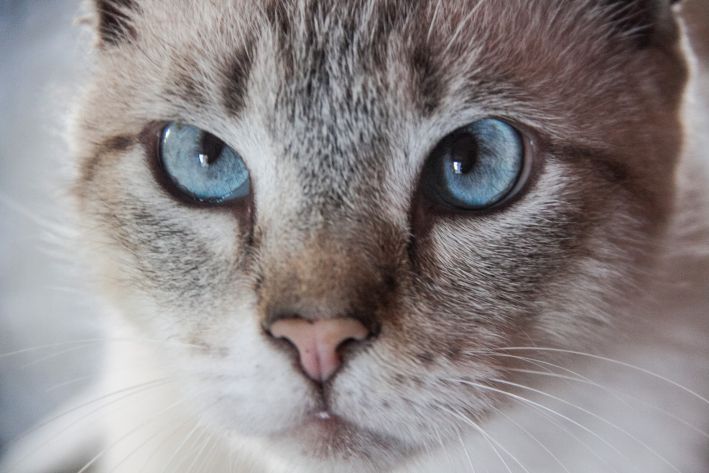9 Facts About White Cats That Will Surprise Anyone
White cats have unique characteristics that set them apart from other cats.
From their majestic appearance to their rare genetic traits, white cats have always attracted attention and admiration.
We'll look at some interesting facts about white cats, explore their characteristics, and find out what makes them so special in the feline world.
From mythology to medical aspects, dive into the world of snow-white cats with us.
Most blue eyed white cats are deaf
White cats have the W gene, which causes a chemical imbalance that reduces melanin production, resulting in white fur and blue eyes. This same gene is also associated with deafness. Cats with the W gene will always have white fur and sometimes blue eyes. Cats with white fur and blue eyes are also more likely to be deaf.

A white cat with a blue left eye will likely have a deaf left ear.
Not all white cats are albino
It is easy to assume that a white cat is an albino since all albino cats are white, however, there is a difference in the amount of melanin produced by cats.
Albino cats lack melanin, hence the lack of color in their skin, eyes, and fur. This does not apply to a white cat, which may have some color visible on its paws and nose.
Another major difference between a white cat and an albino cat is the TYR, OCA2, or W gene. A white cat has the W gene, which affects the melanoblast cells, stopping the production of color in the skin.
May suffer from severe sunburn
White cats are at greatest risk of sunburn if exposed to the sun for too long.
This is because they lack melanin, which is responsible for determining the cat's original color and for protecting it from the sun's harsh ultraviolet rays. A cat can develop skin cancer if it continually gets sunburned.
Few people know that a cat can suffer from sunburn, so they don’t mind their pet being in the sun for a long time.
If your cat enjoys spending time in the sun, try to limit the duration.
Can be of any breed
White cats can be of any breed, as the cause of the color is the dominant gene W, which is passed from the mother to the kitten. The gene hides all the color, replacing it with snow-white fur.
There is no coloring actually
White cats do not actually have a color, especially since they lack the melanin that gives color. Since the cat has the W gene, which erases the original color of the cat, it remains colorless.
Even a cat's blue eyes are not actually blue, they lack the original color, the formation of which was disrupted by the W gene.
Pure white cats are the rarest
Of the total cat population, white cats make up only 5% of the total cat population. Pure white cats are rare and the least common pet, unlike other cat species of many colors, such as tortoiseshell and tabby.
Persians are the most popular white cats
White Persian cats have long hair and a round, flattened face. Regular grooming is necessary to avoid matted or dirty fur.
Unique eyes
The eye color of white cats is related to the amount of melanin produced by the body.
As noted earlier, white cats lack melanin, so they will have light eyes. Eyes can come in a variety of colors, such as amber, blue, yellow, and green. Sometimes they can even have eyes of different colors.
Perceived as timid and quiet
White cats are shy and quiet, and may even seem unfriendly, but the reason is deafness. It will take a human to make the first move to warn the cat when it is time for affection.
Earlier we talked about why a cat licks its owner’s face.
